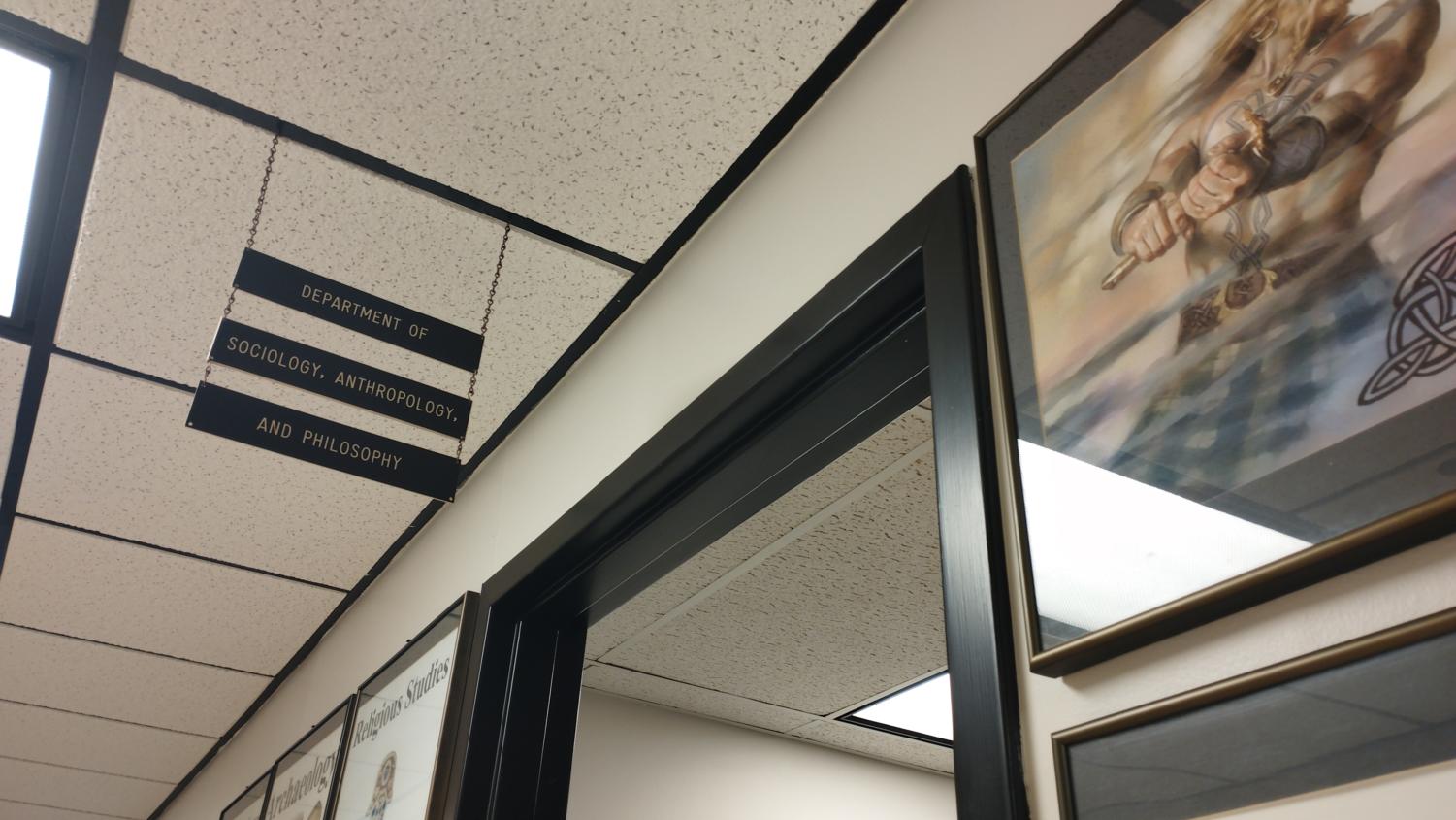NKU found holding at least 52 Native American remains and cultural items
March 3, 2023
In January ProPublica published The Repatriation Project, a series of articles and resources that investigate the failure of U.S. federally funded museums and universities to return Native American, Native Hawaiian and Native Alaskan human remains and cultural artifacts to tribes under the Native American Graves Protection and Repatriation Act (NAGPRA), a federal law passed in 1990.
A core component of the project is a searchable database listing the number of remains and cultural artifacts that an institution has reported to the government as being in its possession but has yet to make available for return. In the database, Northern Kentucky University’s Department of Sociology, Anthropology and Philosophy is listed as having at least 52 Native American remains and at least 17 associated funerary objects, none of which the department has made available for repatriation.
Judy Voelker, director of the Anthropology Museum located on the second floor of Landrum Academic Center, attributes these remains and items to Fort Ancient, a Native American culture in the Ohio River valley from circa 1000 to 1560 CE that shares its name with a Native American archaeological complex in Washington Township, Ohio.
Tyler Swinney, NAGPRA manager and tribal liaison at the Cincinnati Museum Center, describes Fort Ancients as the first people in the area to settle into sedentary agricultural villages, who practiced maize agriculture and supplemented it with hunting, gathering and fishing. The identifying characteristic of Fort Ancient culture is the interlocking lines engraved on the rim and neck of their pottery.
Though they did not directly encounter Europeans, Fort Ancient people acquired European goods by trading with Native American groups that did and might have also suffered from infectious European diseases that were disrupting indigenous populations across the interior United States.
The earliest documentation of the area was recorded in early 1725 to 1729, Swinney said. While European colonization was occurring in all directions—the French in the Great Lakes and coming from the Mississippi River, the Dutch in the Eastern seaboard and the Spanish in the South—the Ohio River valley was “a weird donut hole” where the inhabitants were not being documented in written records by colonists until the establishment of states.
Despite the lack of ethnographic records, archaeological evidence indicates connections to peoples associated with today’s federally recognized descendant communities. Swinney pointed to the Seneca to the east and northeast as a group with a connection to the Ohio River valley but do not see themselves as having connections to Fort Ancient. The primary groups affiliated with Fort Ancient, Swinney said, would be the three Shawnee tribes: the Eastern Shawnee, the Shawnee Tribe and the Absentee-Shawnee.
The remains and cultural items in NKU’s possession were excavated during the 1970s and 1980s in archaeological field schools led by Dr. Barbara Thiel, a Fort Ancient specialist. Field schools continued at NKU until the 1990s. According to Voelker, these items are culturally unaffiliated with any modern-day federally recognized tribe. In cases like this, items are returned to tribes via disposition rather than repatriation, which applies when the institution has identified the items to be culturally affiliated with a tribe or group of tribes.
Cultural affiliation refers to a lineal relationship or shared group identity that links an earlier group to their descendants in a present-day group, established when sufficient geographical, kinship, biological, archaeological, linguistic or cultural evidence points to such a relationship. Once tribes culturally affiliated with the objects have been identified, institutions are to begin consultation to transfer custody of the objects to them. Following consultation, the institutions are to prepare a written plan of action detailing the custody and treatment of the items.
Repatriation is initiated when the lineal descendants or culturally affiliated tribes present evidence that the institution does not have a right to the possession of the cultural items in question, and the institution fails to produce evidence proving otherwise. The process of repatriation itself must take place within 90 days of receiving the institution’s receipt of a written request from the tribe and at least 30 days after publication of an inventory completion notice.
Disposition, added to NAGPRA in a 2010 law, is similar to repatriation in that they are both grounded in cultural affiliations, but disposition places more emphasis on geography. If no cultural affiliations with present-day federally recognized tribes can be established, the holding institution must begin consultation with all tribes from whose lands the items in question were removed. If no tribal group accepts custody of the objects, they can be transferred to a non-federally-recognized group.
Voelker, the NKU Anthropology Museum director, stated that NKU has not returned the items in its holding because no cultural affiliations with federally recognized groups have been found for them and no tribes have made contact for returning the items.

What a lot of organizations did after the passage of NAGPRA in the 1990s, Swinney said, was submit all of their cultural items that are older than when history was first officially recorded in the area—usually the 1700s when the colonies were firmly established in North America—as culturally unidentifiable. This way, organizations would not have to consult tribes on these items until the disposition process was added in 2010. The highest concentrations of culturally unidentifiable objects are in areas that saw tribes forcibly removed by the U.S. government because there were few to no tribal constituents left to lobby for repatriation on those tribes’ behalf.
Swinney notes that disposition’s emphasis on geography is a colonial legacy embedded in NAGPRA: it enforces modern-day state and county borders upon the geography of the past, rather than accounting for how past peoples might have perceived the area. That tribes are responsible for proving they are the ones affiliated with the area from which the objects were removed is another colonial legacy, he said.
Swinney added that when NAGPRA was passed in 1990, all federally funded organizations that possessed ancestral remains bombarded tribes with summaries of all items in their inventories, to the point that some tribes are still catching up with the notifications to this day. To compound the issue, lack of funding and resources means there are not enough people working in the NAGPRA processes on the tribal side.
“People aren’t collection items,” Swinney said. “The problem is it takes a long time to consult tribes to identify who wants to take the lead to find appropriate burial locations and to fund all of that.”
In spite of its shortcomings, Swinney sees NAGPRA as important human rights legislation meant to level the playing field for historically disadvantaged groups, with significant implications for property law. It calls into question whether U.S. institutions have the right to legal ownership of human remains and cultural objects that were taken and studied without permission.
“Anyone who’s engaged in NAGPRA will agree that the relationships that are made with tribal communities and facilitating reconnections to their ancestral homelands and their cultural heritage and past, those are far, far more rewarding and valuable than any object that might be in a museum’s or university’s control,” Swinney said.
The 52 items listed in the ProPublica database are currently in secure storage at the Department of Sociology, Anthropology and Philosophy, according to Voelker and Douglas Hume, professor of anthropology and co-director of the Native American Studies minor program. The minor program is a collection of courses in anthropology and other disciplines that focus on Native American prehistory, history and current social issues.
Native American cultural items that are on display at the Anthropology Museum include quilts, pottery and sculptures by modern day tribes. A photo essay by anthropology alum Gregory Rust on historic and contemporary issues faced by indigenous peoples hangs along the wall of Landrum’s second floor.
Correction: This article previously stated that the Department of Sociology, Anthropology and Philosophy did not respond to a request for comments when Judy Voelker and Doug Hume were included as sources. It was due to confusion as to whether the Anthropology Museum counted as a separate entity from the department. The statement has been retracted.

